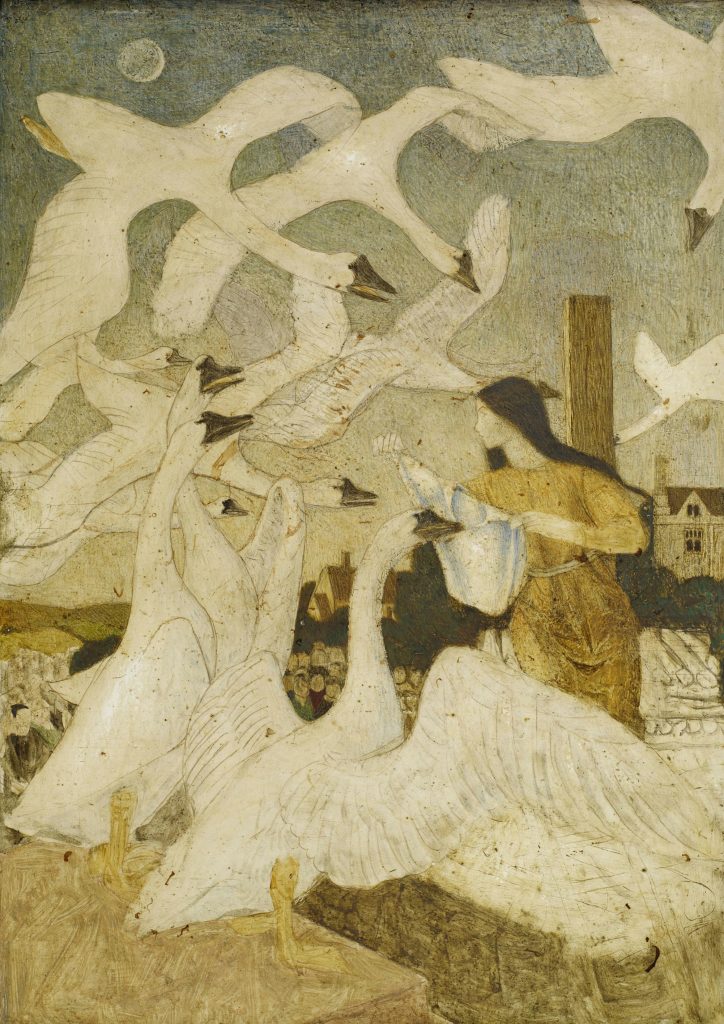Once upon a time, a princess, pampered and raised in the lap of luxury since birth, is exiled from her kingdom when her wicked stepmother transforms her six loving brothers into white birds. As if her fate isn’t already terrible enough, she is cursed into silence, for if a single word passes her lips, one of her brothers will die.
If this premise sounds familiar, that’s because it’s based on the well-known German fairy tale “The Six Swans”, collected by the Brothers Grimm in their book of fairy tales. But here’s where the story differs—instead of being transformed into swans, the brothers are turned into cranes, because this is an East Asian retelling of the tale.
Fairy tale retellings, according to recent publishing trends, have been on the rise lately, and a major reason for that could perhaps be attributed to how they allow marginalised authors to reimagine familiar childhood narratives to include characters that actually represent them. After all, many fairy tales have historically been heteronormative, and for BIPOC children in Anglophone spheres, the most popular fairy tales they would have been exposed to would have centred white characters. Therefore, it is understandable that many of these children would have grown up into authors wishing to make a space of their own in these beloved tales.
However, the mere fact that a novel was written by a BIPOC author does not automatically make it good representation. Take the example I cited at the beginning of this article: the popular duology Six Crimson Cranes, written by Elizabeth Lim and praised by the larger bookish community for its Asian representation.
At first glance, the author does seem to be a safe bet for good representation. She’s part of the Chinese diaspora, has grown up in Japan, and has even minored in East Asian Studies in university. Yet due to her decision to fuse Chinese, Japanese, and Korean cultures and languages in her Six Crimson Cranes duology, she has been criticised for propagating a pan-Asian image and failing to recognise that they, however similar, are absolutely not interchangeable. Setting aside the fact that the West already has a massive problem with confusing these three countries, their conflation is perhaps made even worse when you remember that imperial Japan’s violent colonisation of much of Asia—including, yes, China and Korea—took place not even a century ago, and that relations between said countries and Japan are still fraught to this day. It is for these reasons that many East Asian readers such as myself are so uncomfortable with her haphazard mishmashing of our cultures.
Another point of contention is how the setting, despite its East Asian aesthetic, still feels very reminiscent of the western fantasy genre, despite how similar genres thrive in East Asia (such as China’s wuxia genre). For instance, the concept of being burned at the stake is largely not present in Chinese media (and, if I am not wrong, in Japanese and Korean media as well); I believe executions by beheading or hanging are more common. Shiori, the main character, constantly referring to Raikama as her stepmother is similarly jarring. The proper term of address for a Chinese empress consort by a royal child—even one not of her blood—is 母后 / empress-mother, and they would be expected to treat her as their own mother in the public eye. Concubines, of course, were not to be addressed as mother in public at all.
If Lim truly wished to emphasise the fact that Raikama and Shiori are not related, she could have had Shiori refer (in narration) to Raikama instead as the 继后 / empress successor. She does not, which implies to me that the only representation of East Asian cultures she wanted was the aesthetic of them and not the reality. That, in itself, is a huge problem, and one that is only exacerbated by Lim’s novels being marketed as #OwnVoices representation, lending her novels a sense of authenticity they decidedly lack.
It is not uncommon for me to see my culture misrepresented in Western media. It is, however, shocking that Lim, as an East Asian author herself, has not taken the care and time to research and present our culture with the respect it deserves, and instead simply panders to Western perceptions of what East Asia is meant to be. If her idea of representation is to erase the richness and beauty of our culture to present a sterilised version of it, then I would argue that we are perhaps better off without such representation.
Image: Chris Briggs on Unsplash
